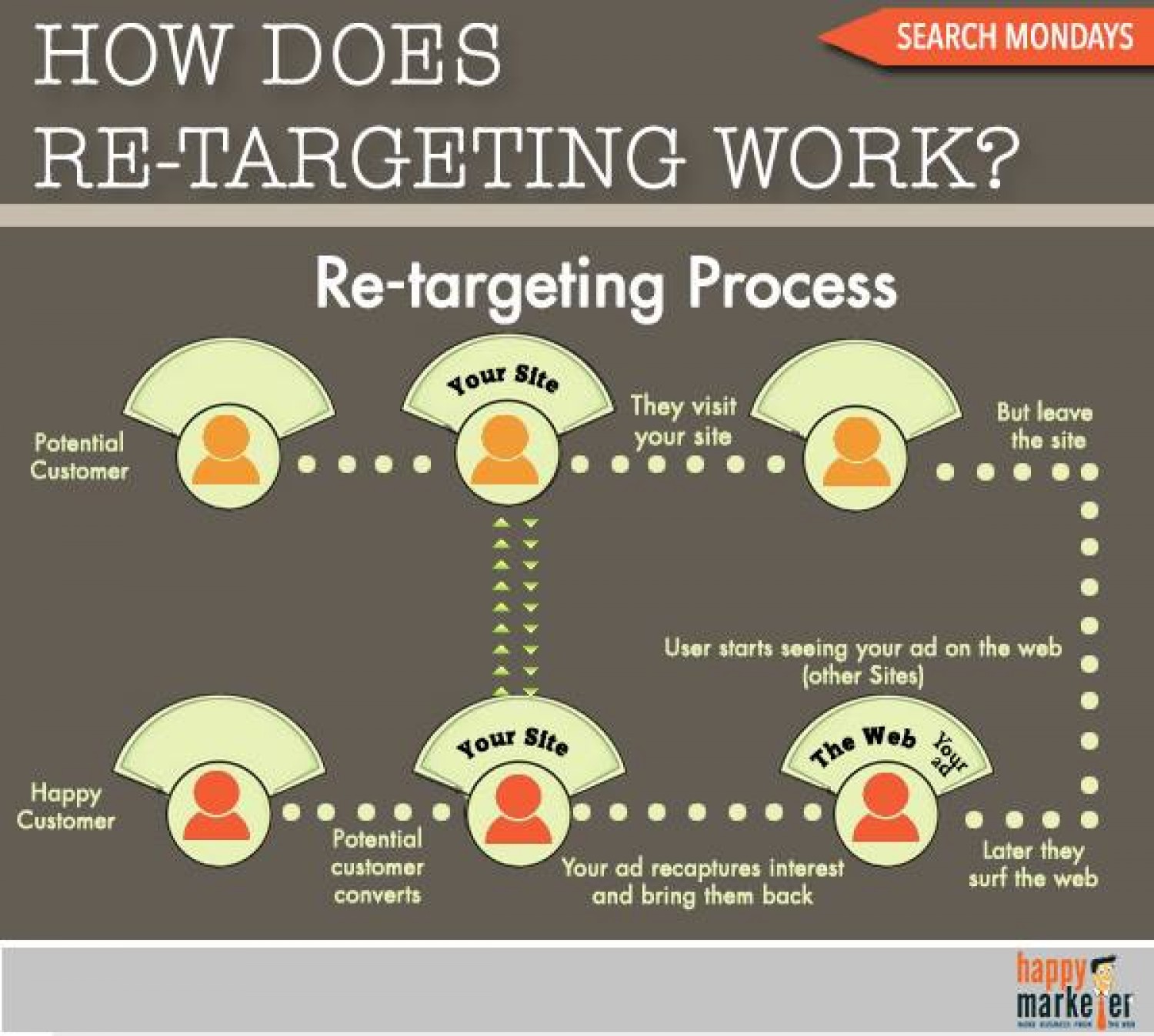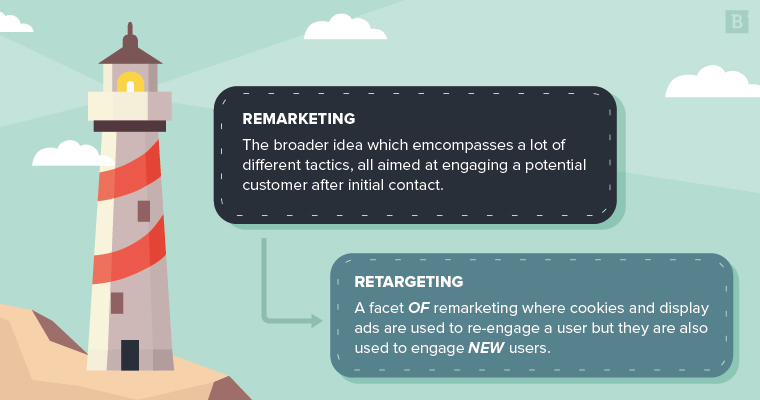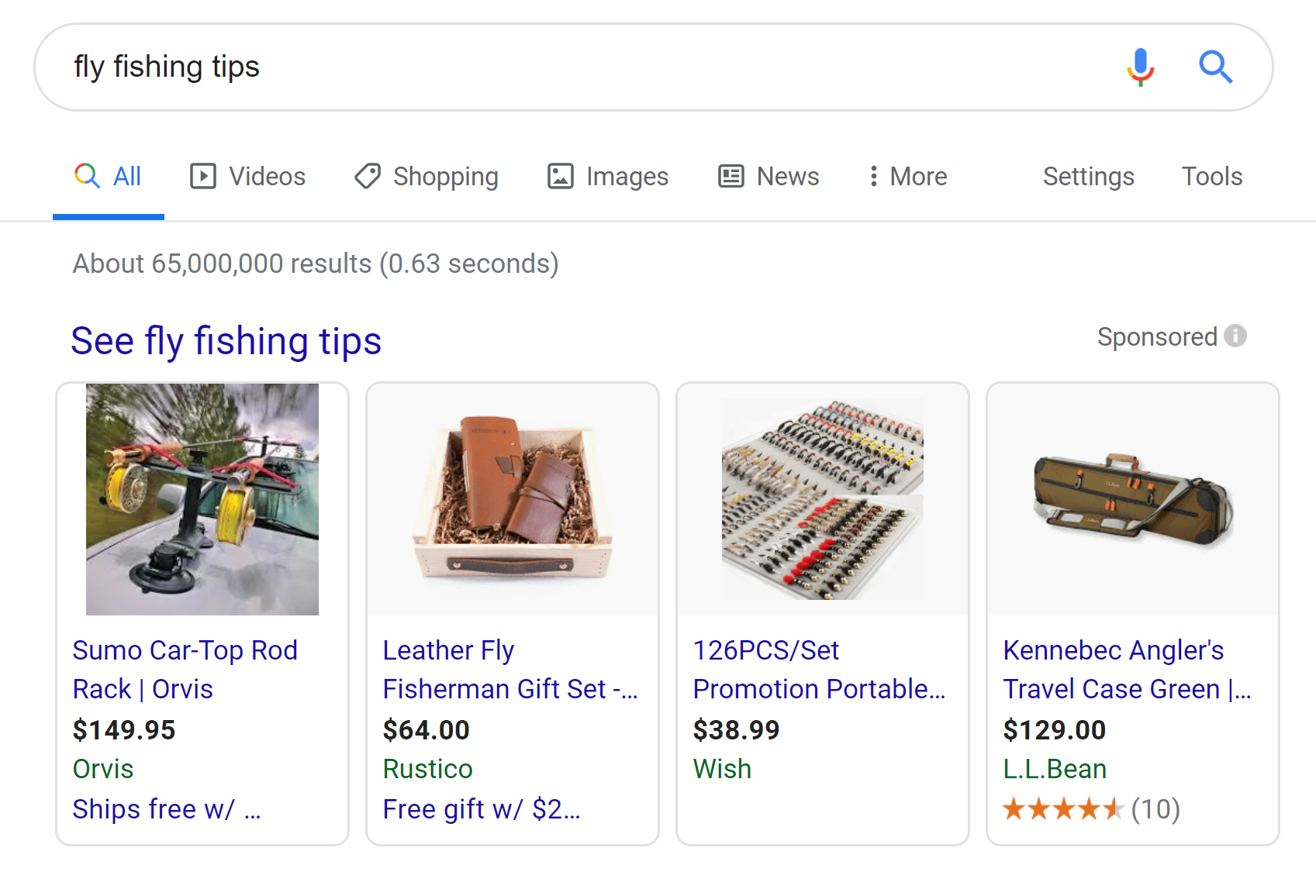Somewhere in the global marketplace, there are people looking for products, services and solutions your business offers.
How do you find those people?
Traditional advertising like TV spots and billboards attempt to place branded messages where relevant consumers are likely to see them. Digital display ads perform the same function, but adds extra layers of personalization.
Search retargeting isn’t magic, but it’s close
If you sell business widgets, you might place a billboard outside of a hotel that receives a lot of guests on business trips. Some percentage of the people who stay there are bound to be interested in your offerings, right?
You’ll get your message in front of the right people – some of the time. Other times, the people who’ll see your ad are uninterested families on vacation. And what about the business travelers staying at smaller motels or AirBnB locations? They’ll never see your ad, even if your widgets are exactly what they’re looking for.

Now imagine you could hire a magician to make your ad disappear – poof! – and then reappear, but only in front of people who are already interested in offerings like yours. That’s the goal of search retargeting.
It’s not magic; it’s automation on a grand scale: Search retargeting uses a visitor’s search history and web browsing behavior to display dynamic ads.
Site retargeting is just one type of retargeting that can draw the right people toward your brand. Here’s an infographic breakdown of 6 types of retargeting:

Let’s take a closer look at how site retargeting is unique, and how it compares to other forms of retargeting campaigns.
What’s the difference between search retargeting and site retargeting?
Before we get too deep into the mechanics of retargeting, let’s look at two variants of this strategy you’re likely to encounter. They’re very similar, but it’s important to understand these nuances so you can build a marketing strategy that adds value to your brand.
- Search retargeting refers to the practice of targeting users based on the keywords they’ve entered into a search engine like Google. These people may have never before heard of your brand, products or services.
- Example: Ted has spent the last hour researching fly fishing tactics. He’s looked up information on the best fishing spots and what species he can expect to lure. Now, Google shows him display ads for thermo fishing waders, a product he’s never heard about before, but one that could be useful for his upcoming trip to Green River, Utah.

- Site retargeting refers to the practice of using cookies to serve display ads to people who have visited your site in the past.
- Example: Alexis runs a small business from home. She recently spent 20 minutes browsing the website of a company that designs booths for trade shows. Later, she navigated to her favorite blog for small business owners. As she’s reading a guide on how to arrange products, the website displays ads that remind her of those custom-built trade show booths.
Essentially, site retargeting helps you to get potential customers to return to your site, while search retargeting helps to bring new customers to your site.
Some more key terminology
Who doesn’t love a few good buzzwords? These are a few of the different flavors of retargeting you’re likely to encounter:
- Contextual retargeting is when potential customers have visited an affiliate site related to your offerings. These “lookalike” audiences exhibit online behavior similar to your current customers, but they haven’t visited your site yet.
- Social retargeting is when social media users see your ads based on their activity on a specific social platform.
- Engagement retargeting is when you show tailored ads to people who have taken action – such as clicking on a specific post – on your website or social media pages.
- Email retargeting is when you segment your email list based on subscriber actions and responsiveness to previous marketing materials.
What’s the difference between retargeting and remarketing?
Remarketing is an umbrella term that refers to any action used to engage customers after an initial interaction. In a crowded market where consumers are likely to see upward of 5,000 ads per day, remarketing is an essential component of the sales funnel. Brands need multiple touchpoints to make an impact on potential customers.
Search retargeting is just one tactic within the broader spectrum of remarketing. Read our full explanation to better understand how these pieces fit together.

What are the goals of a search retargeting strategy?
Using keywords, search retargeting efforts can capture the attention of potential customers and bring them to your website. For example, pay-per-click advertising (PPC) strategists might select a handful of high-value keywords to target with their display ads.
This type of strategy helps brands achieve goals such as:
- Increase brand awareness: B2B marketers know that it can take up to eight touches to generate a viable sales lead. Retargeting keeps brands and their products fresh in the mind of customers.
- Improve visitor engagement: Many of the potential customers who engage with your paid search ads have not yet engaged with your brand. Targeted display ads encourage engagement by enticing these people to visit your site and view your marketing content.
- Enhance the value of your sales funnel: Ultimately, one of the primary goals of any search retargeting campaign is to increase conversions. Search ads can lead visitors further down the buyer’s journey.
Retargeting campaigns provide marketers with analytics data they can use to improve their strategies. For instance, you can discover which specific queries people use to find topics related to your offerings. Then, you can use that data to create blog content and landing pages.

How to measure your retargeting campaigns
Display ad networks like Google Ads or Facebook for Business provide you with an analytics dashboard from which you can monitor campaign progress. Pay close attention to these metrics:
- Impressions: The number of times your display ads were served.
- Click-through rate: The number of clicks your ads received divided by the total number of impressions.
- Cost-per-click: Your total amount spent divided by the total number of clicks.
- Click-through conversions: The number of people who clicked on an ad, visited your site, then made a purchase.
- Visits: The number of people who viewed your ads, and then came to your site.
As you monitor these metrics, you may see a need to adjust your bidding strategy. For example, if your ads have lots of impressions, but few clicks, you may need to increase your ad spend.
Not sure how to assess your ad impressions? We’ve got you covered with a complete guide to impressions in marketing.
Tools you can use to fine-tune your search retargeting efforts
There are many retargeting networks available, but Google Ads and Facebook for Business dominate this space. Google controls about 88% of the search market, while Facebook counts more than 2.4 billion active monthly users. Other platforms such as AdRoll and Criteo can also target users across the web.
Remarketing and retargeting are essential components of a modern paid search strategy. PPC specialists can help your brand identify the best platforms, bidding tactics and keyword strategies to help you find new customers around the web.
Check out our recent infographic to see how search retargeting fits into B2B sales and marketing trends.





